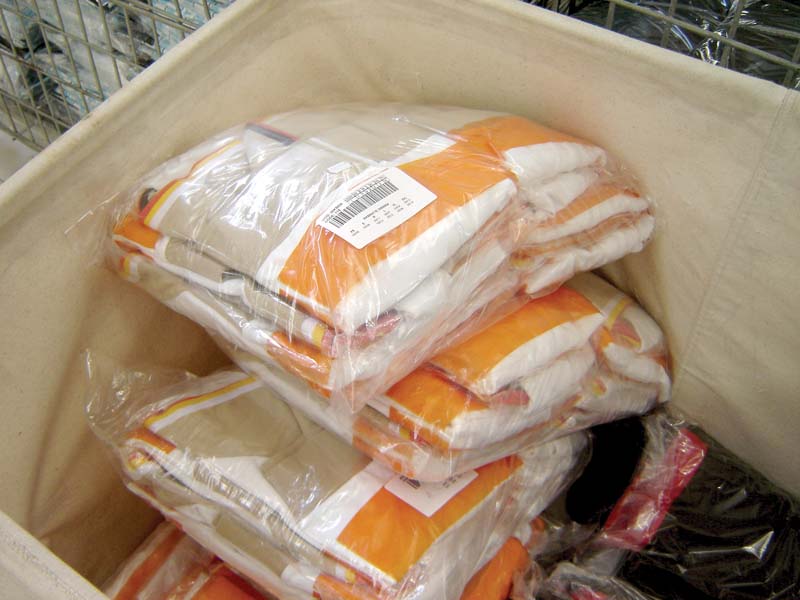
For a decade, Pakistani consumers have seen barcodes and scanners at cash counters of retail outlets. Known as point of sales (POS) systems, they are universal at large stores and even smaller outlets in upscale neighbourhoods.
Barcodes appear like a series of dark vertical lines with spaces. They’re pasted on the products or printed as a part of packaging. The lines and spaces represent binary code, a language the computer can understand. In a POS, the scanner reads the code and the information is relayed to the computer, which automatically compiles details and removes the inventory from the data.
Advantages of the POS system
We have learnt to trust the POS as an honest broker. We believe that the scanner reads the price correctly and that our bills are clean. If only we could say that for handwritten bills without double checking them and finding errors, some wily and some inadvertent. It completes a transaction of up to 15 items in under a minute.
Retailers no longer handle cash themselves. They can hire cashiers and focus their efforts in expanding their stores, stocking them with better and more profitable products and still having enough time and money to start additional outlets.
A typical POS records all sales and even consolidates it across multiple outlets. It perpetually displays current inventory levels and automatically flags fast selling, slow moving, least profitable or more profitable items. This greatly helps the owner in taking better inventory procurement decisions. The usual cost of a locally made POS for a single outlet is less than $1,000 while larger centralised systems can cost up to $100,000.
Ignorance
It seems that a few laundry shops, airlines, couriers and hundreds of retailers are effectively putting our multi-billion dollar textile sector to shame – a sector that never shrieks away from asking government hand-outs and subsidies.
Clearly, when it comes to putting its own house in order rather than crying about external factors, the textile sector forgets to introduce technological innovations within. Amongst its long list of omissions, its splendid ignorance of barcodes remains shocking.
A mid-sized manufacturer of towels, knitwear or woven garments manufactures 1 million to 5 million unique pieces annually. That is a far greater number of items than a small retailer will ever handle in a year. While the manufacturer achieves an annual sales turnover of between $5 million to $35 million, an average retailer’s sales are a meagre one hundredth of this number. Ironically, the retailer seems to understand the barcode far better than a textile manufacturer.
Areas of gaining
For our textile manufacturer, affixing a barcode on each product and scanning it while it moves from one manufacturing process to another should cost less than a thousandth of the value of the product being tracked. But it can yield a windfall. The biggest gains can be made in three specific areas — control over theft, curbs on over-production and elimination of shipment delay. All three failures cost this industry dearly.
There is a widely held belief within the textile sector that between 3% to 4% products are rejected due to quality problems during production and that by over producing by 5%, these quality rejections can be compensated. The cost of producing 5% extra products that ultimately generate no revenue is widely accepted as the cost of doing business and hence is built into the cost of the product.
Data from barcodes of two Pakistani factories debunked this theory. Amongst hundreds, these factories were the only ones in the country that use the barcode technology. The data proved that up to 4% of the products simply vanished. The scanners recorded their arrival into various departments but not their departure – indicating someone had stolen them. Armed with data, establishing the time and the last known location of the product was not too hard. Introducing administrative actions and holding persons accountable even less so.
The incidents of theft dropped dramatically and rejections ultimately were stabilised at 0.3%.
With real time data coming live from all departments, the factories could see orders status with precision. Consequently, they could prioritize their work correctly and quickly react to unplanned events and still finish work on their export orders in time. This helped them escape financial penalties, running into hundreds of thousands of dollars, extracted by customers on late delivery of their orders.
Barcodes are not the only technological innovation that can help this sector, but it’s certainly the one whose gain is out of proportion with the investment. Putting less than $100,000 into barcode technology can reduce this sector’s operating costs by 2% to 4%. This represents an annual gain of $500 million in efficiency for this sector – more than the cost of the hand-outs that this sector habitually seeks from the government. Perhaps, our textile owners should carry their own laundry and do their own shopping, to observe the POS at work.
THE WRITER IS AN ENTREPRENEUR WHO HAS WORKED IN BANGLADESH’S GARMENT SECTOR
Published in The Express Tribune, April 6th, 2015.
Like Business on Facebook, follow @TribuneBiz on Twitter to stay informed and join in the conversation.












































COMMENTS (1)
Comments are moderated and generally will be posted if they are on-topic and not abusive.
For more information, please see our Comments FAQ